#Elder Goths
Text
‘80′s Goths (aka Trad Goths)
A thing I wrote about '80's Goth style in response to a comment from an obviously younger person commenting on the '80's make up video from the previous aggregate.
Early Goth basically grew out of Punk with a lot of metal and some new wave thrown in. Goth had no sub-genres yet because those didn't develop until some point in the '90's. It was all just Goth. You can see the cross pollination in the music of the period. Sisters of Mercy is as quintessentially as '80's Goth as it gets, and you can hear how heavy their sound is compared to the also very Goth Smiths at the other end of the sound spectrum. Goths of my era listened to an eclectic mix of stuff. It was totally reasonable to be a Goth and also like Metallica (Metal), and classic Punk and poppier new wave influenced things like Depeche Mode.
Glam hadn't really been a thing since we were kids. Bowie wasn't Glam himself by the time Goth was happening, remember, though some of us DID look back stylistically to his Ziggy Stardust Era which you can see in the corsets and make up choices, but you can also see a lot of new wave in hair and make up mixed in with the original punk and some metal influence. Clothing was often where punk and metal really mixed.
My first Mohawk was black, but my second in early '89 was a dark purple. Goths were allowed to have whatever hair. Not everyone could afford hair dye in the era before the brighter cheaper colours came in. Again, it's a matter of what you could afford and what you had access to. I saved up to get mine done professionally, but we were in the era of bleach and Koolaid options as well as people repurposing DIY hair products. If you had dark hair, you could get bright orange with Sun In for example. Yes, black was most common and you actually could buy black Clairol or the like, which made it the most popular option, but most popular doesn't mean only option.
You can't really separate the 80's Goth Look from the '80's Goth Music because the two things were so intertwined and so much what early Goth was as a culture.
Something it is super hard to make people who didn't start dressing this way until after commodification really grasp is just how DIY early Goth was. You couldn't just go to a store and buy Goth clothes and jewelry at first. By the end of the decade you could buy an ankh necklace because of things like sandman, but most of the jewelry was handmade by the people wearing it or other Goths, selling it, often on blankets while they made more, or it was vintage stuff that had be repurposed, bought from second hand stores or raided from older relatives. Building a goth wardrobe was exhausting and time consuming and often involved patience.
Finding clothes was an endless round of scavenger hunting and DIY and repurposing. Most of us were very poor and again, nothing was made for us except a few things other impoverished Goths made at the end of the decade. Basically, think etsy only without the internet, so consignment stores and craft fairs and little pop up carts next to those people selling their jewelry on blankets and really that's more an early '90's thing.
We would scouer second hand shops. Luckily places like Good Will were not as picked over then. We looked through old boxes of elder relative's clothes. We learned to do it yourself dye things that were a good cut but the wrong color. We used to make things or repurpose things or patch things together out of multiple pieces and maybe some netting. We learned to add trims and frills if we were into that. We bodged things together with safety pins like the punks we grew out of. We made do.
Yes really, some people had things with glittery fabrics some times or beading or lace or sequins. It depended entirely on your taste and what you could find or knew how to make. Some of the nuance is lost in the photos because this was an era of Polaroids and film photography and some stuff aged better than others.
There was no uniform. No one true style. No mass production. Everything was individual. I can not describe '80's goth in terms of strict criteria because that criteria didn't exist. It should NOT exist now. We knew Goth when we saw or heard it. That was enough.
I think this is why so many of us Elder Goths go ballistic when someone starts trying to police or gate keep Goth. (Except for literal NAZIs who can fuck right off. We don't want them, whatever they are calling themselves that decade. It's the same thing as the Punk community self-policeing over that). Anything else? It's like Gender: you are Goth if you say you are Goth. Work out your own version of what that means.
So yes, purple hair in the late '80's is historically accurate. Yes, you could have things like a glittery or sequined or beaded shirt or sweater or dress for those who wore dresses or skirts. (Some Goth clothing was gendered; some was super androgynous. A lot of '80's and '90's goths were some brand of queer, gender-nonconforming, trans, and or what we'd now call non-binary, but back then we mostly called ourselves androgynous. Some cis men wore skirts because they liked how they looked or found them comfortable. A lot of them switched to kilts later on, but not always. In the late '80's-early '90's Goth culture was full of people playing with gender expression for a host of reasons).
There was a mainstream trend for fancy tights and pantyhose with designs or glitter or different colours in them. Goths could actually find black pantyhose and tights and fishnets at a reasonable price in mainstream stores. Some of the panty hose had cute little patterns on them, usually at the ankles or up the back, but also all over sometimes. some were glittery or extra shiny. It was fine! It was the same with lace and fishnet and long satin elbow gloves mostly thanks to Madonna. This is why you see old trad goths wearing these types of accessories. You could afford them! You didn't have to hand make them! The bead and cross and rosary thing was because you could buy those cheap at stores because mainstream people also wore them. Thanks to people like Cyndi Lauper and Madonna creating a mainstream market for accessories we could use too.
Our subculture hasn't been properly captured in media it's easy to access. Most of Goths in movie or TV in the '80's and early '90's were stereotypes made or chosen by people who weren't goth either to demonize us as part of a moral panic or as a punchline or a freak show. The fair representation is in the photographs taken of goths by goths at the time and in the memories of Elder Goths like me.
Trust me, the Karolina Żebrowska makeover looks just fine to me, within the range of what people were wearing then. She could have walked into a club or a house party and fit right the fuck in. Looking at her made me a little nostalgic for the scent of clove cigarettes even though I'm allergic. She did just fine.
51 notes
·
View notes
Text

my will is as strong as yours, and my kingdom is as great. you have no power over me.
#Goth#whimsigoth#dark aesthetic#aesthetic#elder emo#mystical#dark#darkness#witchy#witchcraft#pagan#gothic#witchcore#spooky#eerie#labyrinth
846 notes
·
View notes
Text




#Goth#dark aesthetic#aesthetic#elder emo#mystical#dark#darkness#witchy#witchcraft#gothic#witchcore#spooky#goth aesthetic#mystery#romantic goth#culture
638 notes
·
View notes
Text

〰️➿💀➿〰️➿💀➿➿💀➿〰️➿💀➿〰️
#dark coquette#coquette#coquette girl#girlblogging#gaslight gatekeep girlblog#sad gorl hours#pink goth#soft goth#purple goth#goth aesthetic#fairy grunge#soft grunge#taken from fb#elder emo#goth gf#alt gf#grunge gf#not mine#rotting#pastel goth
511 notes
·
View notes
Text

holy summer rain was falling
photo by Tim Nordberg
#tim nordberg#photography#great oak moodboard#crows moodboard#midwest gothic#michigan gothic#great oak lyrics#american gothic#ruralcore#rural america#rural#art#black dress#southern gothic#western#tree#Goth#whimsigoth#dark aesthetic#aesthetic#elder emo#mystical#dark#darkness#witchy#witchcraft#pagan#gothic#witchcore#spooky
168 notes
·
View notes
Text
Introduction To Candle Magic
Ancient Craft & Occultism
___
By KB

Introduction
Welcome back witches in training! We've been covering a lot of ground bases lately, especially within the realms of spellwork. Today, we're going to take that a bit further by opening our horizons to the infinite world of Candle Magic! In this lesson, we're going to discuss basic color magic, the history of candles, and how to use candles in your craft. Let's get to it!
A Brief Candle History
The exact origin of the candle is quite a debate among historical scholars, but there is a large sum of evidence that suggests candles made of beeswax were used in Egypt and Crete as early as 3000 BCE. Other early candles were fashioned using tallow-soaked tapers manufactured from fibrous materials like rushes. Rushlights were one of the first types of enclosed light we are aware of, yet they were unlike candles as we know them today because they lacked a wick. The impoverished continued to utilize them for centuries because they were also inexpensive to produce.
It may come as no surprise that the Romans are credited with creating the first wicked candles by continuously dipping a roll of papyrus into tallow, a converted form of beef or mutton fat, while wrapping it around a length of twine. Candles were still used in the same manner, but they had superior quality and a longer lifespan than rushlights.
However, candle production was not only practiced by the Romans. Wicked candles were "invented" by numerous other ancient civilizations who also used local plant-based waxes. The eulachon fish, which is so oily that when dried, it would burn like a candle when you ignite one end, was used as a candle by tribes in Alaska and Canada. The Chinese used wrapped ricepaper as wicks. In India, wax was created from the fruit of the cinnamon tree.
Candles, in any form, were a significant component of religious rites throughout this time. The Jewish Festival of Lights, Hanukkah, was originally documented around 165 B.C. Constantine, the Roman emperor between 306 and 337 A.D., mandated the use of lamps during Easter celebrations. Indeed, from roughly the time of Constantine, lights have played a significant role in religious events and signify the purifying light of God.
Candle flames were seen by ancient peoples to reveal enigmatic things. One could experience an altered state of consciousness and see gods, spirits, or the future by gazing into a flame. In a magic ceremony for "dreaming true," or getting information from dreams, the late Egyptians of the third century B.C. utilized lamps and possibly candles. He retired to a pitch-black cave that faced south and sat there gazing into a flame till he saw a god. Then he went to sleep, hoping that the deity would show up in his dreams and provide him with the answers he was looking for.
The Roman Christian scholar Tertullian fiercely objected to the ancient Pagan practice of lighting candles and lights during religious ceremonies, calling it "the useless lighting of lamps at noon." Candles and lamps were used in Christian rites from the fourth century, but candles weren't put on church altars until the later Middle Ages, starting in the twelfth century. Consecrated holy candles are used in ceremonies for blessings, atonement for sins, and the exorcism of demons, all of which were instituted by the Catholic Church.
Using Candles In The Craft
Candles have long been used as versatile tools, but in witchcraft, they can also be used for divination, spirit sensing, casting spells, and a variety of other things. Let's jump right in.
Divination - Reading the wax and observing how the candle really burns are the two most popular techniques for candle divination. You must observe the candle's burning pattern, including its height, flickering, and the presence of many flames, in order to make a prediction based on how it burns. Two flames could indicate assistance from the afterlife in achieving your objective. Even the hues of the flame may give you a clue as to how well your efforts are going. However, there is no agreement on what these indications signify. While some practitioners hold that a candle that burns tall and strongly indicates that one's request will be granted, others draw attention to the fact that the wick's length and quality, as well as an air vent, can affect how the candle burns. Prioritize your intention over the candle's burning process. You can always read the wax once it hardens, or pour the wax directly into cold water for it to harden and then interpret the symbols, much like you would with bone throwing, or scrying. Personally, I also like to pay attention to the smoke and interpret the way the smoke from the candle flows in order to interpret surrounding energies.
Spirit Work - Fire scrying is the most common way to communicate with spirits, and as it's the only method with candles I have experience with, that's what I will be discussing here. I encourage you to do your own research into spirit communication outside of my suggestion, because I'm sure there are plenty other methods out there. Again, there is no base consensus in a means to interpretation, as spirits and practitioners alike have different ways of communication. Just like with any other scrying, its imperative to stay connected to your personal energy while connecting with surrounding energy to properly interpret the signals you are receiving. Connecting with deities is also possible using this method of Candle Magic.
Rituals/Spellwork - In rituals and spells, candles are used to increase vibrations, represent specific elements and other important objects or creatures, use symbolism, and seal items like letters or spell bottles. Even candle spells can be created simply lighting a candle with intention. It is very common to carve, dress, and anoint candles in aid for ritual and spellwork as well. Fire being the main force driving the work, of course.
Worship - Candles are often used as offerings for various deities. Symbolism, color, and dressings can all play a part of this as well. They are also used as a beacon for an entity to guide you through your working.
Candle Correspondences
When undertaking serious candle work, choosing the right candle colors is crucial. Each hue has a unique meaning and possesses unique abilities. It's crucial to pick colors that align with your aims while working with candles in spells or rituals. Please remember that this is a very basic list and that the things you will read in your personal correspondence are far more significant than anything you will read here.
White - Attraction, Purification, Protection, Balance, Clarity, Grounding, Healing, Hope, Innocence, Optimism, Peace, Truth, Willpower
White can take the place of any other color when not available. Just a bit of visualization is required.
Black - Acceptance, Afterlife, Banishing, Binding, Determination, Endings, Justice, Loss, Release, Break, Security, Grief, Negativity, Patience, Persistence, Rebirth, Strength, Self Control
Red - Assertiveness, Courage, Creativity, Energy, Desire, Loyalty, Motivation, Power, Survival, Change
Yellow - Action, Communication, Learning, Finances, Business, Intellect, Inspiration, Knowledge, Wisdom, Stimulation
Pink - Acceptance, Affection, Beauty, Compassion, Healing, Family, Harmony, Kindness, Longevity, Nurturing, Partnership, Prosperity
Green - Abundance, Agriculture, Beauty, Creativity, Family, Fertility, Healing, Luck, Environment, Nurturing
Purple - Authority, Enlightenment, Spirituality, Emotions, Imagination, Influence, Truth, Wisdom, Overcoming Fear
Orange - Adaptive, Ambition, Confidence, Courage, Discipline, Energy, Freedom, Justice, Positivity, Pleasure, Stimulation, Travel
Blue - Honesty, Truth, Trust, Dreams, Sleep, Mental, Wisdom, Leadership, Fertility, Marriage, Healing, Study
Brown - Endurance, Animals, Balance, Courage, Grounding, Stability, Protection
Silver - Awareness, Intuition, Money, Purification, Potential, Stability, Success, Celestial
Gold - Abundance, Ambition, Money, Happiness, Power, Influence, Solar energy
Even if you aren't aware of it, the type of candle and the type of wax it is made of may have an impact on your craft. It can all come down to functionality or magical implications.
Taper Candles
Taper candles are tall, thin candles with a tapered top; they are often placed in vintage, smaller candle jars and are more ornamental and symbolic. Shorter taper candles are typically used to seal objects with wax. They can, however, be utilized for any task.
Pillar Candles
There are many different types of pillar candles, but these are the ones I see used almost exclusively. They differ from being short and fat to being tall and slim. They can be utilized for a variety of purposes, but I've found that rituals are where they're most useful.
Votive Candles
Votive candles are little and barely taper more at the base. They are frequently placed in glass candle holders and are used as offerings to deities. Given that their modest, tapering size is what makes them votives, their sizes rarely fluctuate. But they do come in a variety of colors. They are often white.
Tealights
Tealights are tiny, thin, and short candles. You can use them to make offerings, perform spells and rituals, decorate, or even keep wax warmers warm. I frequently observe this kind of candle being used, largely because they are the least expensive candles available.
Now, let's go over some of the different wax types.
Beeswax
It used to be difficult and dangerous to obtain beeswax, which added to the candle's mystique and spiritual power. Beeswax is a natural substance that burns more slowly, making it a premium item among contemporary candle spiritual practitioners; yet, because of its price, it may not be the best choice. Beeswax candles are available in a wide variety of shapes, sizes, and hues and can be rolled, poured, or dipped. Longer ancestral rituals that demand higher vibrations and purpose work best with these candles.
Soy
People who use earth magic sometimes like soy candles since they are natural. Although they tend to burn for a shorter period of time than beeswax candles, they keep fragrances quite well. When dressed, they can also be extremely fragile and challenging to mold or carve. The majority of soy candles are already housed in glass. They are most effective when utilized in ancestral rituals for healing and rebirth.
Paraffin
Since it's a byproduct of the petroleum industry, many people consider it to be less natural than the available alternatives. The fact that it releases chemicals like toluene into the air makes it a poor choice for poorly ventilated areas. Other than providing the foundation for candles, I haven't discovered any sources that discuss the magickal powers of paraffin itself. I found a few for petroleum jelly, which is frequently used as a foundation for herbal salves, but they mainly praised how simple it was to use as an ointment. Even our non-human ancestors may have used petroleum, according to some sources, which makes it a solid foundation for ancestor magic.
#elder witch#baby witch#witchblr#witchcraft#beginner witch#goth#green witch#kitchen witch#wicca#witch#dark witchcraft#witch tips#witchythings#traditional witchcraft#witchraft 101#tarotblr#astroblr#tarot#spiritual
225 notes
·
View notes
Text


Working on my alt-y ‘Pixar Mom’ body rn🖤
Reblogging allowed
#daddysroyalwhore#daddyswhore#mine#punk princess#Pixar mom body#Pixar mom#alternative girls#alt girls#alt girl#scene emo#emo scene#metal bitches#girls who rock#bmth#ptv#sws#elder emo#escape the fate#alt gf#goth gf#cnc k!nk#bd/sm brat#sl*t#cnc brat#cnc free use#rough cnc#queer#pansexual#July 1st#cancer season
151 notes
·
View notes
Text
My 90s/Y2K photos
It's kinda amusing to me that 90s and Y2K goth has become a little subgenre all of its own, because that was my era.
However, it also makes me think that there may be people out there who would enjoy seeing my old photos from this time. All these were taken in late 2000 or early 2001 when I would have been 18/19. Faces of my friends obscured since I don't know whether they'd want them shared!
Poor quality due to these being photos of physical photos originally taken with a film camera. We couldn't do millions of digital selfies to get ones we liked at that time, just had to hope for the best and wait until your film was developed...
I have no objection to these being shared, but please reblog, don't repost 😉


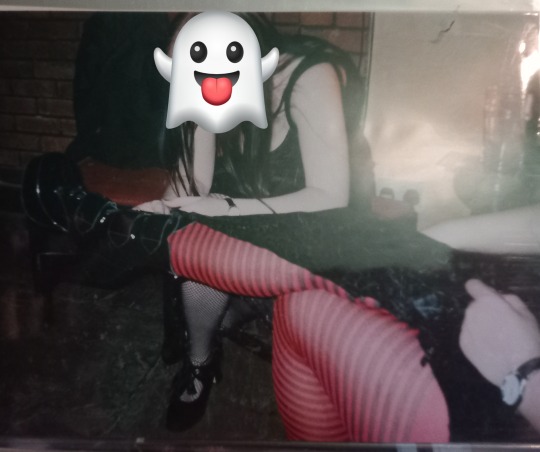

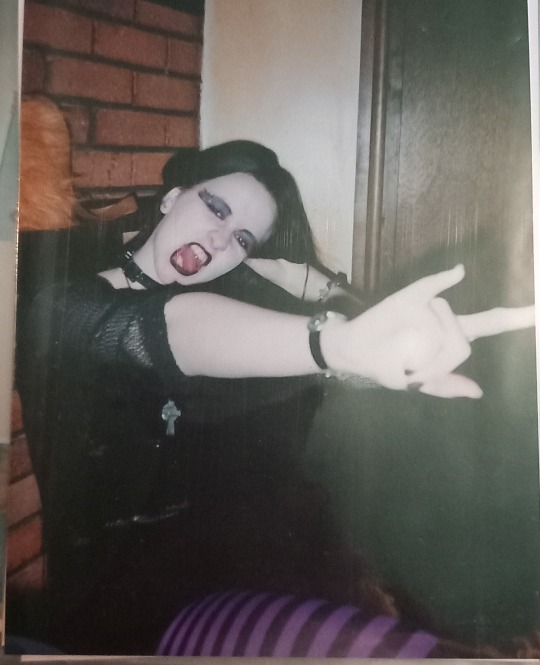

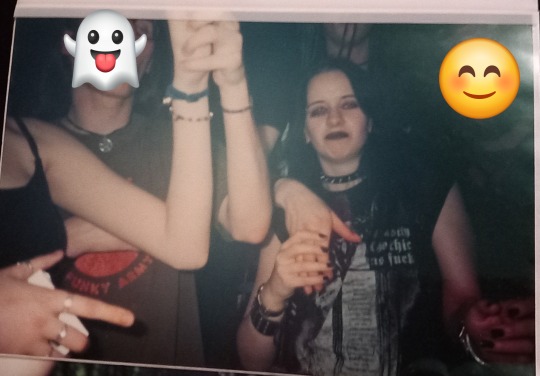

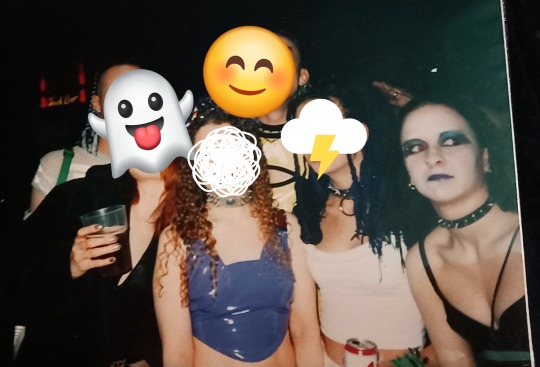
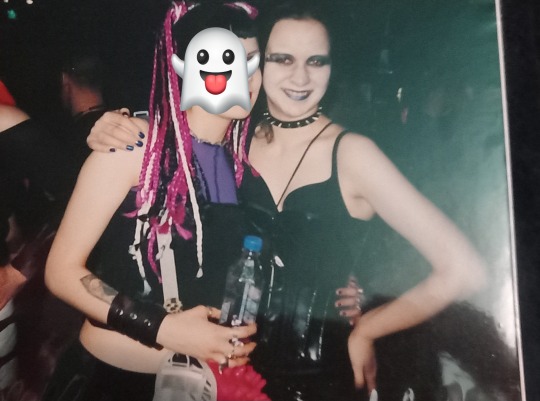
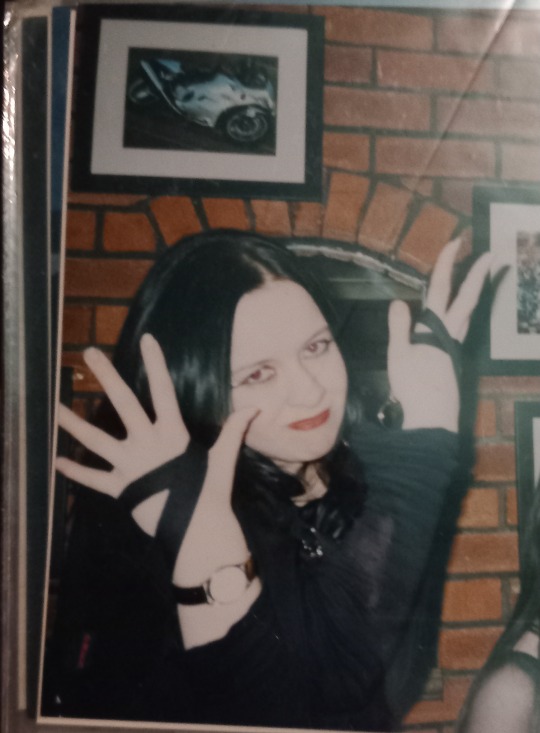
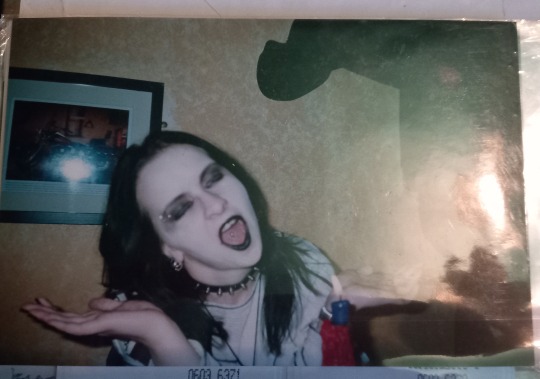
And here's the collaged album I keep them in, also an authentic relic from that time. Not sure what Darth Vader is doing on there. Or Cristina Scabbia come to that, I really dislike Lacuna Coil!
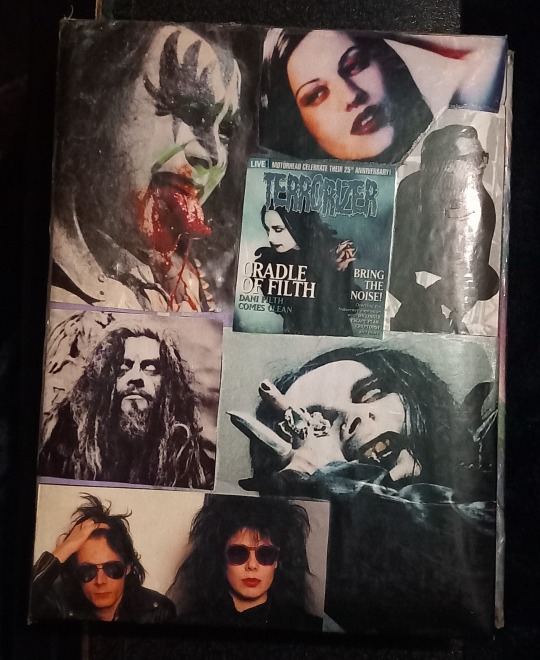


#90s goth#90s alternative#y2k goth#y2k alternative#90s alt rock#90s aesthetic#y2k aesthetic#gothic fashion#gothic#goth#goth style#goth aesthetic#90s#y2k#90s metal#Y2k metal#gothic style#gothic aesthetic#gothic subculture#goth subculture#elder goth
198 notes
·
View notes
Text

girls don't want flowers they want a daedric dagger ...and also flowers🗡️
#dagger#daedric#daedra#daedric weapons#skyrim#the elder scrolls#elder scrolls skyrim#tes: skyrim#tesblr#tes skyrim#my edits#goth#gothic#goth aesthetic#gothic aesthetic
271 notes
·
View notes
Text
Another disabled Elder Goth friend suggested there should be a "Retired Goth Bat Sanctuary" for people like us. This delights me.
There is talk of Tee shirts.
Possibly next week.
I already want one.
2 notes
·
View notes
Text
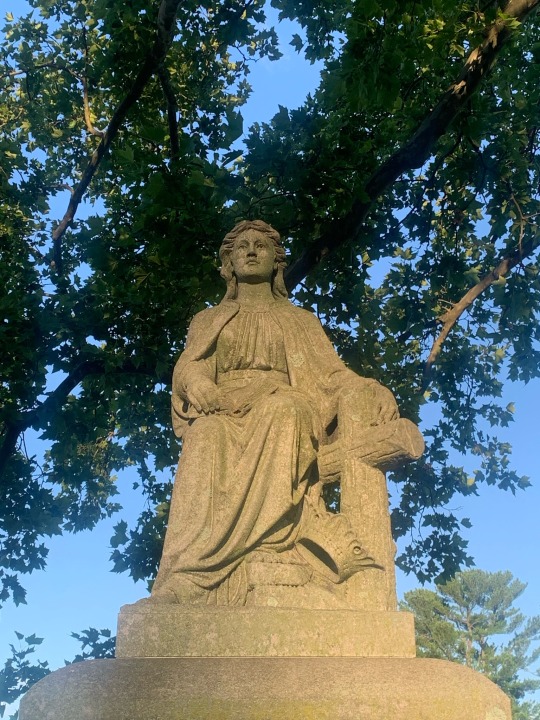





feminine figures for the dead
7-19-24 Reoin Defiant-Ouellette
#Goth#whimsigoth#dark aesthetic#aesthetic#elder emo#mystical#dark#darkness#witchy#witchcraft#pagan#gothic#witchcore#spooky#eerie#feminine#divine feminine#dark feminine#cemetery#marbid#macabre#photography#pennsylvania
165 notes
·
View notes
Text

#Goth#dark aesthetic#aesthetic#elder emo#mystical#dark#darkness#witchy#witchcraft#gothic#witchcore#spooky#goth aesthetic#mystery#romantic goth#culture#mistica
345 notes
·
View notes
Text

°•○¤ 💜 ¤•°
#happy friday night#friday night fun#yes I definitely look like this now#and am not sick#🫡🫡🫡#sapphic#girls who like girls#wlw#lgbtq#pansexual#butch bait#italian girl#wlw nsft#wlw ns/fw#curvy brunette#femme#femme4masc#femme4butch#bd/sm brat#brat4butch#curvy mature#goth gf#curvy and cute#elder emo#420#raw#me
162 notes
·
View notes
Text


Y'all like open shirts, swords, and slutty swashbucklers? Okay good.
#Selfie#self portrait#Alt men#Alternative#Pirate punk#Pirate core#Punk#Elder emo#Black and White#black & white#Monochromatic#Guys with guages#Live steel#Sword#Men with swords#I took a big set with two of my swords#goth aesthetic#Goth#Punk aeathetic#Open shirt#Bare chest
77 notes
·
View notes
Text
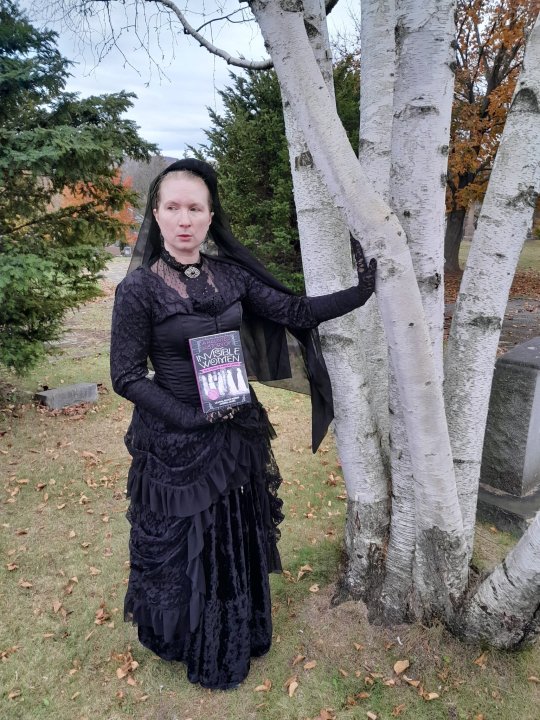
HELLO!
(Yes, this is me as Sarah Winchester for Halloween. Also, yes, this is pretty much my general wardrobe give or take a lace layer. Yes, I wrote a long chapter in this book about Sarah Winchester because I really love her and find her to be fundamentally misunderstood.)
I just wanted to drop by and say it's still Women's History Month and it's still a GREAT time to read about historical women and how their stories resonate with us today. BONUS: you can do this through ghost lore! Here's how!
A HAUNTED HISTORY OF INVISIBLE WOMEN: TRUE STORIES OF AMERICA'S GHOSTS examines women's history by using ghost stories; unpacking how we talk about women, alive and dead. Available wherever books are sold, in paperback, audio and digital! Retailer links here!
Word-of-mouth is so important for books like ours, so if this book interests you, could you please share? Thanks so much and Happy Haunting!
#gothic#goth#victorian#ghosts#ahauntedhistoryofinvisiblewomen#haunted history#history#historical#womens history#womens rights#womens history month#non fiction#nonfiction#haunted house#haunting#spooky#ghost stories#spirits#womens issues#goth aesthetic#goth girl#gothgoth#romantic goth#gothic aesthetic#elder goth#spooky reads#dark academia#dark aesthetic
172 notes
·
View notes
